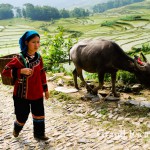Part III – Editing / Post-Processing Your Pictures in LightRoom
No matter where I travel, I immensely enjoy visiting markets. Many of them, especially in Africa & in Asia, but also in the Middle East & in South America, are an assault to your senses: colorful and at times disorientating, aromatic or even intoxicating, vibrant and eventually hectic places… But this is where “the real life” can be found, so different from touristic highlights (though some markets have turned extremely popular in the last years, even amongst tour groups…)
In my first years as a Travel Photographer, markets were a really frustrating experience, and the result was almost always far bellow my actual experience and even further from my expectations. Sounds familiar? Nonetheless, step by step, my technique improved, and the results tremendously changed… Now markets often represent some of the best photo opportunities I experience while traveling.
Here are 37 tips to significantly enhance your photo-taking at markets, based on the challenges I identified & experienced and the solutions I have worked out. I do not pretend to cover every aspects of such a broad and difficult subject, but only to share with you some ideas. Nevertheless, I wish I had known a few of those points earlier. If you have other tips, feel free to share them in the comments below!
- Milk Seller in the streets of Pushkar, Rajsthan, India
- Omani Woman at the Cattle Market in Nizwa on Friday Morning, Sultanat of Oman, Arabic Peninsula
- Children Posing for the Picture, Lalibela, Ethiopia, Africa
- Working on the rice fields at the Rice Terrasses of Yuanyang, Yunnan, China
- Daily Market in Harar, Ethiopia
I split the recommendations into 3 main categories:
- Organizational Aspects,
- Photo Technics,
- Editing / Post-Processing Your Pictures in LightRoom
Part I – Organizational Aspects – See my Post from February 17th, 2016
Part II – Photo-Technics – See my Post from February 22nd, 2016
Part III – Editing / Post-Processing Your Pictures In LightRoom
- Take Your Pictures in RAW
I cannot repeat it often enough: only take your pictures in RAW! Especially now that you are post-processing your pictures, this will make a tremendous difference! Here are 11 reasons why you should take your picture in RAW and not in JPEG!

A glimpse of Timbuktu: men in traditional clothes, sheep, trucks … and dust! Several worlds meeting each other, Timbuktu, Mali
- Do Not Trust Your Camera’s Display To Select Your Pictures
True, the display of your camera gives you a reasonable idea if the picture might actually be good, or not. But… And this is a major “but”: do not fully trust it to select your pictures! A picture might appear sharp on your camera and be actually slightly blur (or the contrary). I made a lot if mistakes, and ended up deleting the good pictures and keeping the less good ones. I strongly recommend deleting pictures (except the ones that are a clear “miss”) first when you saw them on your computer, ideally with a view at 100%…

Colourful Chiva buses, old dodge buses, always completely full, Guambiano Indigenous Market, Silvia, near Popayan, Cauca, Colombia, South America
- Download Your Pictures in LightRoom
There are many solutions to organize and edit / post-process your pictures. I have personally been using LightRoom since 8 years, and it really took me to the next level. Here is why you should use Adobe Photoshop LightRoom
- Single Database – LightRoom stores your pictures only once, no matter how many times you copy each one in various selections, for instance if you wish several types of output (one in low resolution for your website, and one in high resolution for printing). For each new catalog or each new editing of a picture (virtual copy), LightRoom only creates links to the original data and adds Layers or Filters, as does Photoshop.
- Non-Destructive – Non-Destructive editing in LightRoom or Photoshop allows you to make changes to an image without overwriting the original image data (no matter what you do – crop, resize, enhance), which remains available in case you want to revert your changes. Because Non-Destructive editing doesn’t remove data from an image, the image quality doesn’t degrade when you make edits. You can perform nondestructive editing in LightRoom or Photoshop working with Adjustment Layers. Or Smart Filters.
- RAW-Workflow – RAW files are nothing else than the raw sensor data. They need to be further processed to become an actual picture. LightRoom offers one of the most efficient “RAW-Workflow”. This tool interprets and develops means RAW files into an image.
- Selecting pictures – With drag and drop, you can move each picture on your computer and put similar ones next to each other, and finally compare them (with one click). This tool is extremely helpful when selecting pictures that are very similar (like 20 photos of one sunset…).
- Managing pictures – No matter if you work with key words, markings (like stars or colors), selections of pictures, galleries, LightRoom enables you to manage your pictures extremely efficiently.
- Optimize your pictures – This does not have to be rocket sciences. Most of the time, a few clicks will immensely improve the final result (crop, white balance, contrasts…). In our opinion, when using LightRoom you very seldom need Photoshop… And it is much easier to use!
- Manage & optimize your videos – LightRoom not only allows you to manage your pictures, but also your videos. A new feature allows improving your videos, the very same way you improve your pictures…
True, LightRoom is quite a complex program and seems difficult to use in the beginning. You need to invest some time in order to learn how to select, manage and improve your photos. But it will save you a lot of time later on!

Woman at the 5-Day Market on Inle Lake, Myanmar – The five villages on the shore of Lake Inle take turns, so there is actually a market each day of the week.
- Do Not Hesitate To Delete Many Pictures
You will discover, while post-processing, that many pictures have small flaws… And this is all the more true when photographing at markets, where you are facing some extra challenges:
- Markets can be chaotic places, with a lot going on… You will hence face a lack of time to properly focus and frame your pictures.
- When you sit down and try to get forgotten and take pictures with a Tele-Lens, you have great photo opportunities, but this requires a lot of patience and some luck, as the person you want to photograph might look decidedly in the wrong direction, or someone might just step between you and your subject at the worst moment…
- Under and over-exposer are also problems that you will regularly face at markets, sometimes to an extend that you cannot “save the picture” during editing.
You should delete the ones that are nothing special, so that you can better focus on the ones that are really interesting. Over the years, I grew the habit of deleting approx. 50% of my pictures immediately after importing them (Markets or Wildlife can be even more), and post-processing approx. 20%. If you have 5% of really good picture in one day, that’s an outstanding “harvest”…
- Spend Enough Time Sorting Your Pictures
There are two reasons why you should carefully sort your pictures before editing them:
- First, you should only focus on the better ones. No one wants to see 732 pictures of a specific subject…
- Moreover, you can edit pictures in batch in LightRoom, and by doing so, you can save a LOT of time… First identify and put together pictures that will require a similar Editing / Post-Processing.
- Apply Lens Corrections
All lenses, even the best ones, create Chromatic Aberration. What does it mean? A lens will not focus different colors in exactly the same place because the focal length depends on refraction and the index of refraction for blue light (short wavelengths) is larger than that of red light (long wavelengths). The amount of chromatic aberration depends on the dispersion of the glass (and the quality of the lens)… To make it short and simple, LightRoom allows two automatic corrections, which you should undertake for all your pictures – The improvement is significant:
- “Enable Profile Corrections”
- “Remove Chromatic Aberration”
- You can also try the correction “Upright Auto”, which first automatically levels the horizon or the background of your picture, and potentially also correct the distortions of Wide Angle Lenses. Be careful though, as the corrections might be very good, or completely absurd (then, just reverse this correction). One important aspect: NEVER do the “Upright Auto” correction in batch, as it applies the one for the first picture to all pictures selected and will then not work properly for all those pictures…
- Crop Your Pictures
Especially in markets, where you do not have sufficient time to perfectly compose your pictures, this will be an important step:
- Eliminate unnecessary parts of the picture, for instance if you haven’t zoomed in enough…
- Try to apply the “Golden Rule” or “Rule of Third” if this was not the case to enhance the composition of your picture.
- Check that the horizon or background is straight.
- Last but not least, Crop doesn’t mean that you must retain the original proportions (3:2 for DSLR cameras). Sometimes, other formats can be much more expressive. Let your imagination run free!

Man smoking a pipe at the 5-Day Market on Inle Lake, Myanmar – The five villages on the shore of Lake Inle take turns, so there is actually a market each day of the week.
- Enhance The White Balance
The “White Balance” in digital photography means adjusting colors so that the image looks more natural. It is the process of removing unrealistic color casts, so that objects which actually look white are rendered white in your photo. White Balance adjustments must take into account the “color temperature” of a light source, which refers to the relative warmth or coolness of white light. If the human brain processes the information that comes from our eyes and automatically adjusts the color temperature, digital cameras often have great difficulty with this process…
Of course the White Balance chosen depends on the actual light, but I personally tend to lightly increase the Color Temperature to reach warmer colors and hence enhance the festival of colors you often witness at markets. In normal daylight, I would rather choose 5.500 to 6.200 Kelvin (Canon takes 5.200), and early morning I go as high as 7.500…

Woman smoking at the 5-Day Market on Inle Lake, Myanmar – The five villages on the shore of Lake Inle take turns, so there is actually a market each day of the week.
- Optimize The Tone Curves
The Tone Curves enable you to not only change the overall light & contrast on your picture but the strength of each individual color. I personally use it mostly to enhance contrasts and reach a more vivid picture, moving from Linear to High Contrast and then increasing the Highlights & Lights (+8 / +5 for instance) and Decreasing the Darks & Shadows (-5 / -8 for instance). Be careful though not to saturate completely the colors & especially the Dark & Shadows…

Blue skirts, thin hand-woven ponchos and a bowler hat, Guambiano Indigenous Market, Silvia, near Popayan, Cauca, Colombia, South America
- Optimize the Presence
When increasing Saturation & Vibrance, you reach a warmer & more vivid picture. I generally choose +4 / +8. More important is the “Clarity” for portraits: as you do not want to underline too much the imperfections of the skin, you will want to reduce this value, by -12 to -24, to reach a softer and more pleasant portrait.
- Selectively Change The Exposure – Apply Graduated Filters
One of the major challenges at Markets is the Over and Under-Exposure that you have for many pictures, as parts of the picture will be in broad daylight (strong sunlight) and parts of the picture (the face of the person you photograph for instance) in the shade.
LightRoom enable to apply “Graduated Filters” on each picture, making that over-exposed parts turn less exposed and under-exposed parts better exposed. Those “Graduated Filters” can be applied for parts of the picture (the top third for instance) or for small specific parts (the face of someone). This tool “saved” many pictures at various markets!
- Add A Commentary To Your Pictures
Once you are done with editing / post-processing, it is important to know where the picture was taken (and what it represents)… Therefore, I put a comment on all my pictures. Note that this can also be done in batch in LightRoom, for instance all pictures with “Friday Morning Cattle Market in Nizwa, Oman”.













Comments are closed.